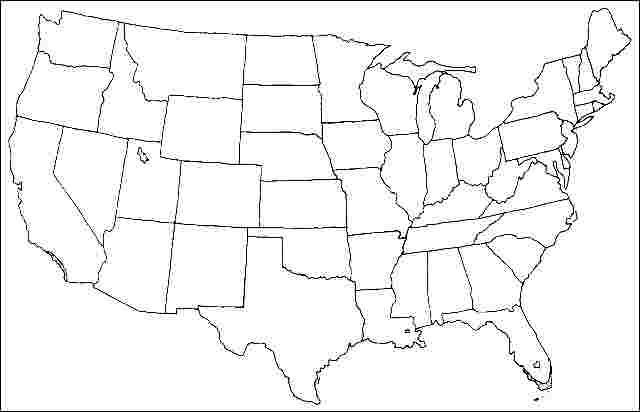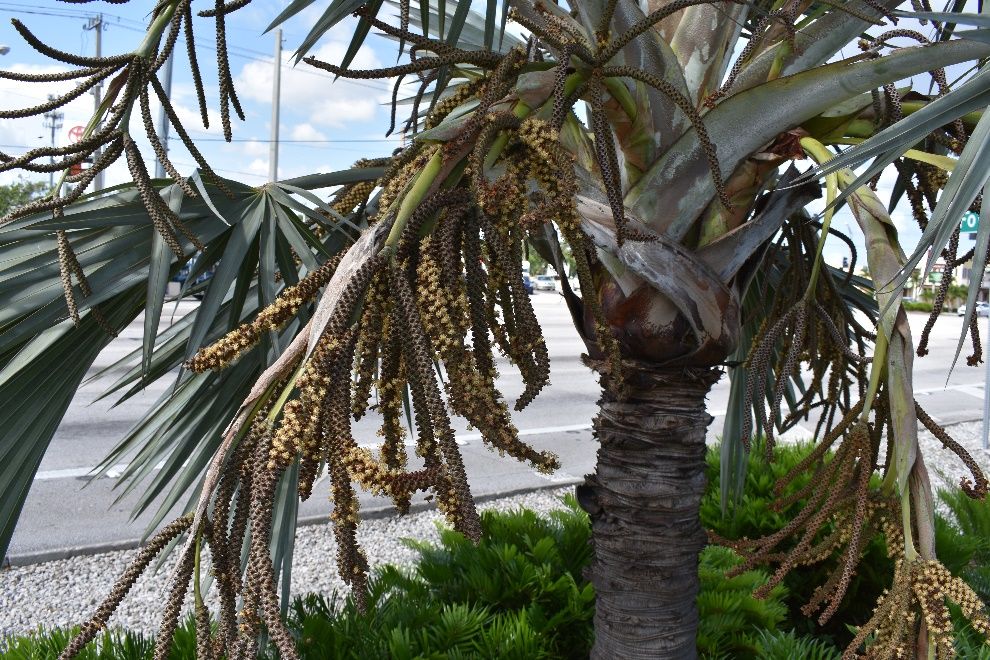Introduction
A single-trunked palm, eventually 20 to 35 feet tall with a 15-foot spread, Latan Palms are noted for their distinctive, coarse-textured leaves. The large, very thick and stiff leaves, up to eight feet in diameter, are held aloft on five-foot-long petioles. The surface of each leaf is covered with a whitish, waxy or wooly down, providing a silvery appearance to the palm. The three to six-foot-long flower stalks are present among the leaves in spring and some of the glossy brown, two-inch-wide fruits are always ripening. The 10-inch-wide trunks have thick, swollen bases. Latan Palm makes a striking specimen planting and is well-suited to seaside locations due to its moderate salt-tolerance. Plant it in an area where you would like to attract attention. People's eyes will always be drawn to this plant, no matter where it is planted.

Credit: Stephen Brown, UF/IFAS
General Information
Scientific name: Latania loddigesii
Pronunciation: lat-AY-nee-uh loe-dih-GEEZ-ee-eye
Common name(s): Blue latan palm
Family: Arecaceae
USDA hardiness zones: 10A through 11 (Figure 2)
Origin: not native to North America
Invasive potential: not assessed/incomplete assessment
Uses: deck or patio; specimen; container or planter; highway median

Credit: UF/IFAS
Description
Height: 20 to 30 feet
Spread: 10 to 12 feet
Crown uniformity: symmetrical
Crown shape: palm, upright/erect
Crown density: open
Growth rate: slow
Texture: coarse
Foliage
Leaf arrangement: spiral (Figure 3)
Leaf type: costapalmate
Leaf margin: entire, serrulate
Leaf shape: star-shaped
Leaf venation: palmate
Leaf type and persistence: evergreen
Leaf blade length: more than 36 inches
Leaf color: silver, green
Fall color: no color change
Fall characteristic: not showy

Credit: Stephen Brown, UF/IFAS
Flower
Flower color: yellow, white/cream/gray (Figure 4)
Flower characteristics: not showy

Credit: Stephen Brown, UF/IFAS
Fruit
Fruit shape: oval (Figure 5)
Fruit length: 1 to 3 inches
Fruit covering: fleshy
Fruit color: green, brown
Fruit characteristics: does not attract wildlife; not showy; fruit/leaves a litter problem

Credit: Stephen Brown, UF/IFAS
Trunk and Branches
Trunk/bark/branches: branches don't droop; showy; typically one trunk; thorns
Pruning requirement: little required
Breakage: resistant
Current year twig color: not applicable
Current year twig thickness: N/A
Wood specific gravity: unknown
Culture
Light requirement: full sun, partial sun or partial shade
Soil tolerances: clay; sand; loam; slightly alkaline; acidic; well-drained
Drought tolerance: high
Aerosol salt tolerance: moderate
Other
Roots: not a problem
Winter interest: no
Outstanding tree: no
Ozone sensitivity: unknown
Verticillium wilt susceptibility: resistant
Pest resistance: sensitive to pests/diseases
Use and Management
Preferring full sun but tolerant of partial shade, slow-growing latan palm should be located on fertile, well-drained soil. Unfortunately, it is susceptible to lethal yellowing disease, and so should be used sparingly in the landscape.
The different species of latan palm can only be told apart by leaf color. Only young leaves that have not yet turned silvery should be used for this determination. Latania loddigesii, blue latan palm, has blue-grey leaves. Latania lontaroides, red latan palm, has reddish petiole, leaf margins and veins. Latania verschaffeltii, yellow latan palm, has leaf margins, veins, and petioles which are deep orange yellow.
Propagation is by seed.
Diseases
Latan palms are susceptible to lethal yellowing disease.